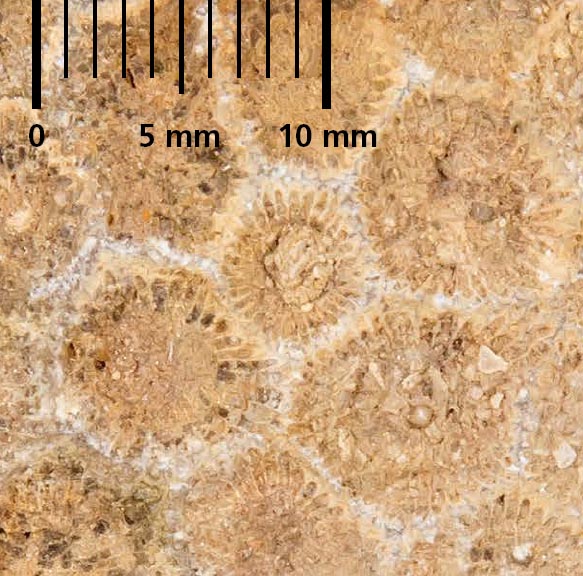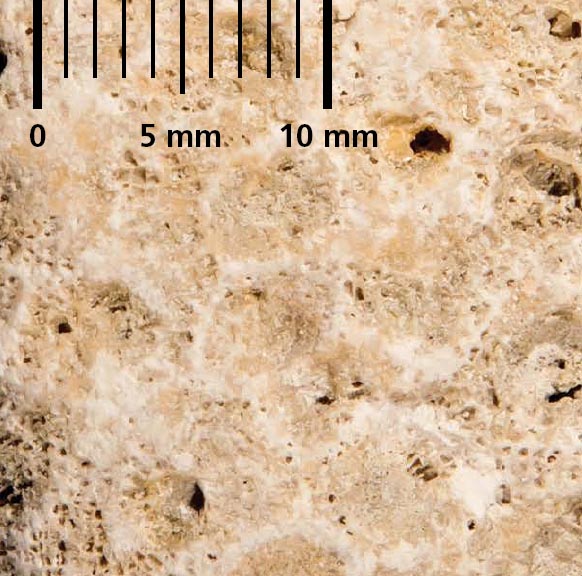
With no fewer than 10 Hexagonaria species present in the Traverse Group limestones, all with very similar features, it can be daunting for novices trying to find H. percarinata. The differences between Hexagonaria species can be extremely subtle—so subtle that the majority of collectors won’t notice them—but with some time and practice, you can get better at spotting H. percarinata as well as several lookalike species.
Realistically, it won’t be possible for anyone without significant knowledge of coral biology or outside of a lab setting to identify all 10 present species. But that shouldn’t stop you from trying. Being able to apply your knowledge to assign even tentative species names to your specimens makes for a much more interesting and fulfilling collection. Thankfully, narrowing a specimen down to two or three possible species is relatively easy, once you know to measure average corallite size and count their septa. From there, though, only additional research will help pinpoint a specific coral.

This specimen has corallites that average 7–8 mm with 34 septa and is likely H. subcarinata or H. attenuate.

This Charlevoix stone contains very small corallites of less than 5 mm and is likely H. alpenensis.
Farther east, at less frequented exposures of Devonian rocks, there is another species, Hexagonaria alpenensis, that is less commonly seen but can be easy to identify. Named for the Alpena Limestone, which is another rock layer in the Traverse Group, H. alpenensis is the smallest species of Hexagonaria, with corallites measuring less than 6 mm, making it very easy to visually tell them apart from percarinata’s much larger corallites. Similarly, another variety of Petoskey stone known locally as Charlevoix stone also contains a different member of Hexagonaria with smaller corallites, but it is less distinctive than H. alpenensis. However, many misidentified or misunderstood “Charlevoix Stones” actually contain coral of another genus entirely, known as Favosites (page 74).

The specimen below has a mixture of different corallite sizes, ranging from about 6 mm to around 10 mm. It may be H. fusiformis.
Specimen courtesy of Dean Montour